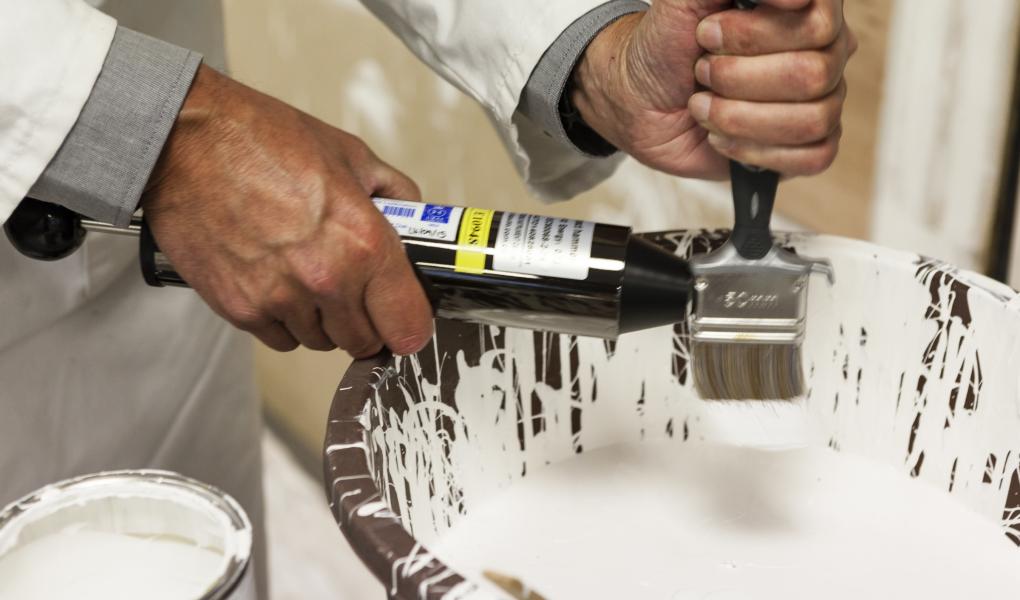We use a comparable set of brushes, for instance with synthetic bristles and 50 mm in breadth.
The laboratory test
Five brushes for each brand are purchased and tested using an ordinary water-based wood paint (Servalac Exclusive high-gloss) in white. The laboratory test will be performed by three test engineers who repeat each part of the test three times with each brush. The test results consist of both technical measurements and professional evaluations.
Ability to pick up and release paint by weight
Each brush is dipped into the pot of paint until the bristles are half-submerged. Each brush is held in the pot for five seconds and then allowed to drip for a further five seconds. After this, any surplus paint is struck off using what is known as a “spring impact hammer”. This is a controlled method equivalent to the short side of the brush being hit against the pot. A surface is then painted in a vertical motion until the brush can no longer release any more paint. By weighing the brush before and after the paint work, the test engineers can measure the brush’s ability to pick up and release paint.
Ability to pick up and release paint by number of dips
The brush is dipped and allowed to drip following the procedure described above. A surface of 0.6 x 0.41 m is painted using as few dips as possible, while also focusing on achieving a good end result with regard to coverage and smoothness. The number of paint dips needed to cover the given surface is counted. To ensure that the test engineers paint in layers of roughly the same thickness, the surfaces are weighed before and after painting.
Ability to pick up and release paint by measurement of brushstrokes
The brush is dipped and allowed to drip following the procedure described above. A vertical brushstroke is painted with the best coverage possible. By measuring the length and coverage of the brushstrokes they can make, the test engineers are able to measure the brush’s ability to pick up and release paint.
End result (finish)
The quality of the end result is rated in a special light space. The evaluation includes aspects such as the uniformity of colour dispersion and whether there are any traces of brush marks.
Painting corners and mouldings
The test engineers evaluate how good the brushes are at painting corners and rounded mouldings by painting details on a round footstool. The evaluation includes both how easy the brush is to handle and the end result on the painted surface.
Precision
In order to evaluate how easy the brushes are to manage and control, the test engineers would paint as dense and straight a line as possible. The test is intended to simulate painting a window frame, or any similar edge where one wants to paint as close to the line as possible.
Ergonomics
The test engineers evaluate the brush’s handle and balance.
Ease of handling
The test engineers’ overall evaluation of how good or bad the brushes are to paint with, and whether they are easy to clean.
Durability
The number of bristles lost is noted over the entire course of the test.
Paint splashes
Hard brushes have a tendency to splash more than soft brushes when painting. To measure the differences between the brushes, they are each mounted onto a rotating wheel, which is then stopped abruptly. The amount of paint the brushes spray when the wheel stopps is then measured.
Discolouration
The brushes are placed in a water bath for 24 hours, after which it is evaluated whether this results in any discolouration or rust anywhere on the brushes.
Weighting of the results
The results of the test elements are rated on a scale of 1 to 10, where 10 is the best. In the overall result, the different test components are weighted in the following way:
-
Ability to pick up and release paint 30%
-
End result 30%
-
Painting corners and mouldings, precision 15%
-
Ergonomics and ease of handling 15%
-
Quality and durability 10%

